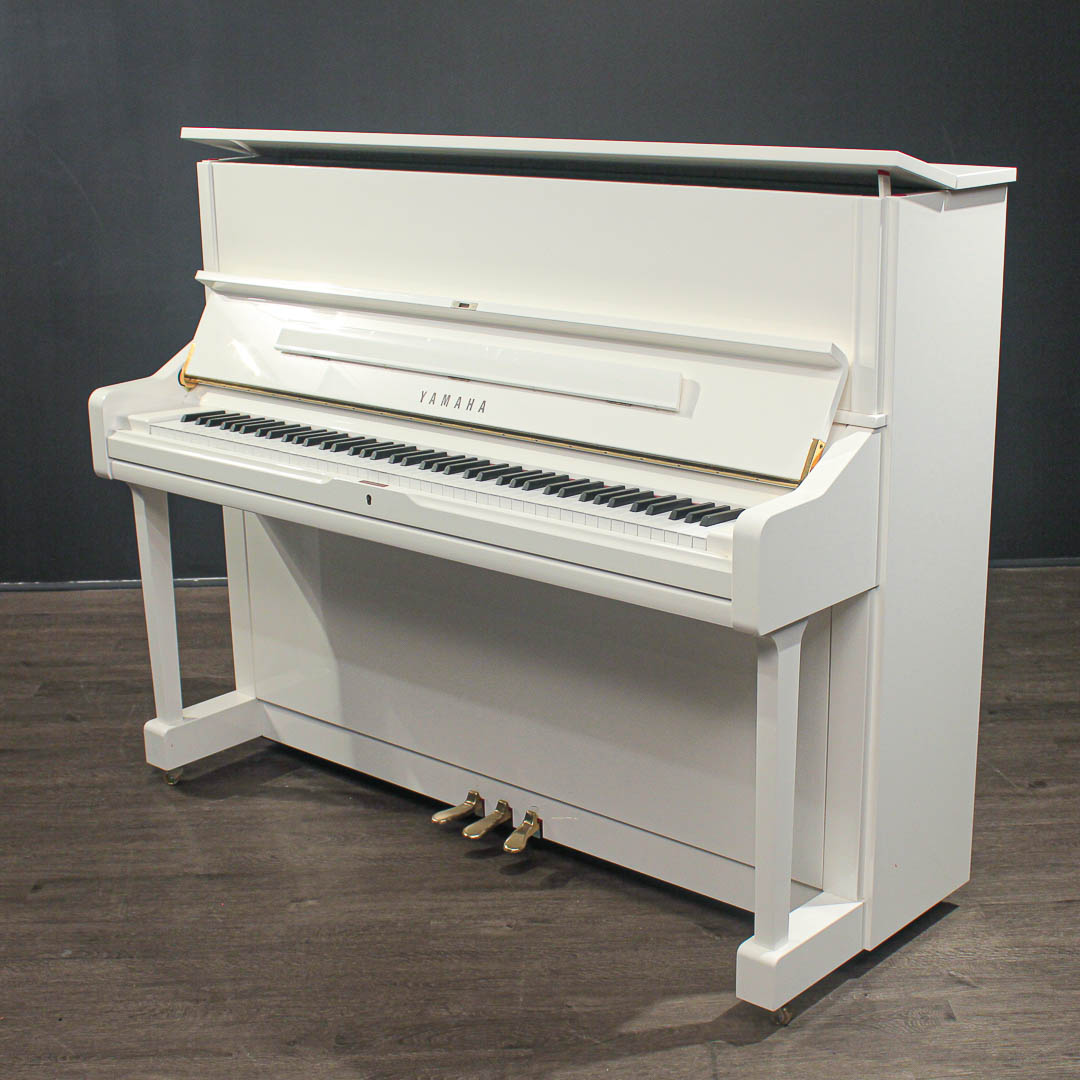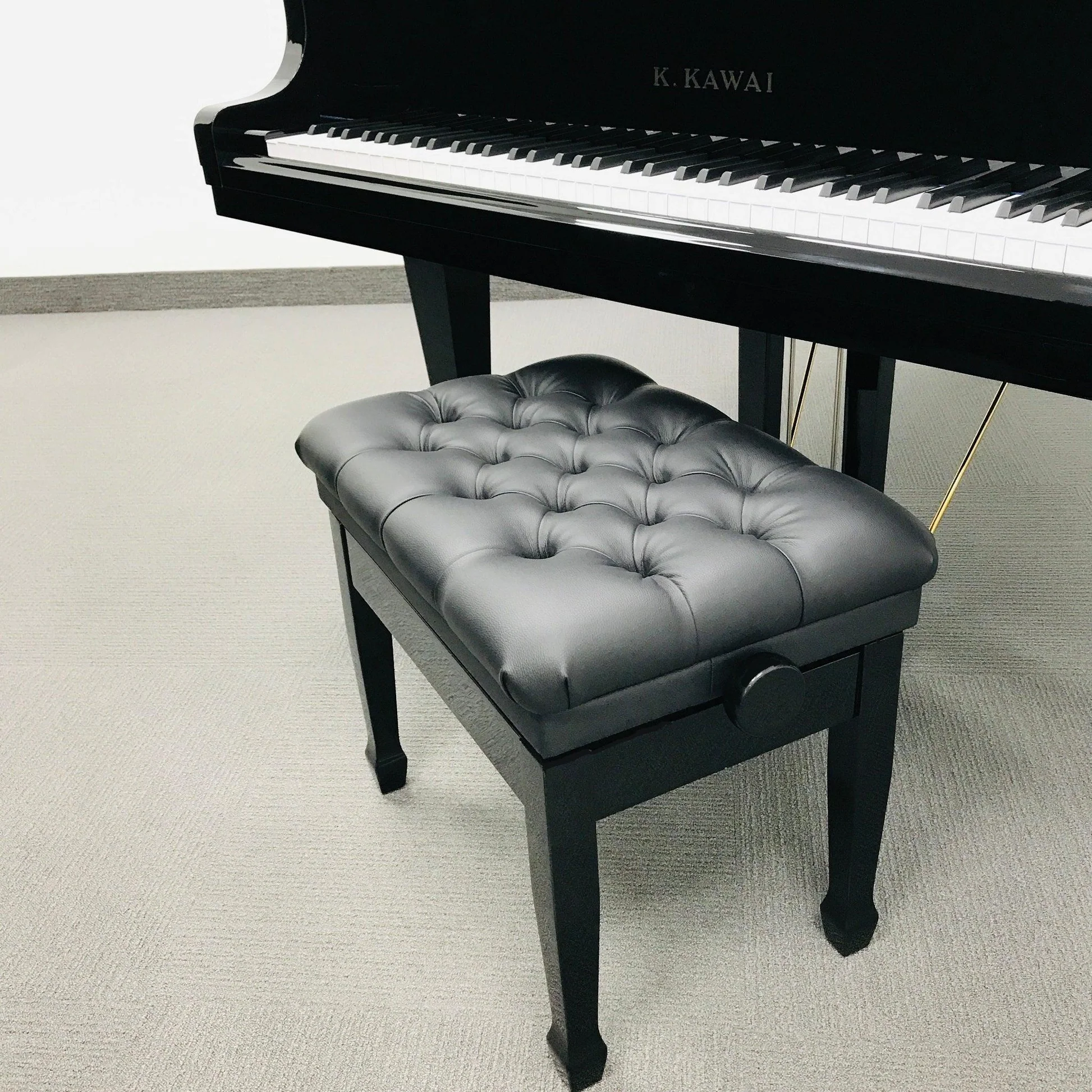I was in the market for a new piano, and as I started researching different styles and types, I came across something called a spinet piano. As someone with limited knowledge about pianos, I was confused- what exactly is a spinet piano and how does it differ from other types of pianos?
If you’re like me and have been wondering about this unique instrument, then you’ve come to the right place! In this article, we’ll explore everything you need to know about spinet pianos before making your next big musical purchase. From its history and design to its pros and cons compared to other types of pianos, we’ll cover it all. So let’s get started on unraveling the mystery behind the spinet piano!
So, what is a spinet piano?
A spinet piano is a type of small upright piano that was popular in the mid-20th century. It typically stands around 36 inches tall and has a compact design, making it ideal for smaller spaces. The keys are arranged in an offset manner, with the shorter bass keys on one side and the longer treble keys on the other. This allows for a more compact size compared to traditional pianos.
Spinet pianos were designed to be affordable and accessible for average households, as they were cheaper than larger grand or upright pianos. However, due to their smaller size and construction, they often have less responsive touch and tone quality compared to larger pianos.
Before buying a spinet piano, it’s important to consider your space limitations and playing needs. While they may be more budget-friendly, they may not offer the same level of sound quality as larger pianos. Additionally, some models may require more frequent tuning due to their design.
Overall, spinet pianos can be a great option for beginners or those with limited space but it’s important to do research before purchasing one to ensure it meets your musical needs and expectations.
Understanding the History of Spinet Pianos
The spinet piano, despite its size, holds a significant place in the history of music. It emerged around the early 20th century and was immensely popular until well into the mid-century due to its small footprint and affordable cost. Named after Bartolomeo Cristofori’s spinetta – an instrument which resembled a harpsichord but was much smaller – this delightful piece of musical equipment has seen numerous transformations over centuries.
While its ancestors were more compact versions of grand pianos or harpsichords, modern spinets have their unique identity that differentiates them from other varieties of pianos. For example, they usually stand less than 40 inches tall making it easy to fit into any room without dominating space.
- The first Spinet Pianos: These were produced by manufacturers such as Baldwin and Kimball who crafted these instruments carefully while maintaining superior sound quality.
- The Drop Action Mechanism: This was introduced later on to further decrease the size. Herein lay their only drawback – this mechanism made maintenance difficult as accessing strings became cumbersome.
Over time though, larger upright pianos regained popularity and by late 20th century production of new spinet models declined precipitously. Despite having faded from contemporary markets, they remain cherished heirlooms in many homes today – silent witnesses to changing tastes and trends within music history itself. They may be petite compared to most other instruments- but never underestimate how much rich melody a dainty little Spinet Piano could produce!
Exploring the Unique Design and Structure of a Spinet Piano
A spinet piano is a marvel of musical design. Compact yet capable, the spinet draws its name from its smaller size – an aspect that enables it to fit into cozier spaces where larger pianos would be intrusive. The interior structure of this miniaturized masterpiece revolves around something known as ‘drop action’. This term refers to the keyboard’s positioning; set above the strings and soundboard, creating a melodious charm hard to ignore.
- The beauty of a spinet manifests not only through its music but also in its construction.
- Its mechanics are ingeniously thought-out for maximum space utilization and optimum acoustic effect.
Though smaller than usual, there’s no compromise on the quality of sound produced by spinet pianos. Unlike their grander counterparts which have horizontal string alignment, they boast vertical orientation due to compactness. Because vertical strings need less length for lower notes compared with horizontal ones, these nimble instruments can maintain their petite frame without sacrificing tonal depth.
- The rich tones resonating from them often surprise listeners expecting lesser sound capability due to their reduced dimensions.
- No matter how small or humble appearing on the outside – never underestimate what might emerge once you start tickling those ivory keys!
Read also: what is a spinet piano
Comparing the Sound Quality and Performance of Spinet Pianos to Other Types
Spinet Pianos Versus Other Types
Ah, the humble Spinet piano. This compact beauty, compared to other types of pianos like grand and upright models, has a unique positioning of its action mechanism beneath the keys rather than behind them. Although it has been crafted with great attention to detail, some may argue that its smaller size inevitably impacts its sound quality and performance.
The Sound Quality: In terms of tonal richness and volume capacity, spinets might have a bit of catching up to do when placed side by side with their larger counterparts. Due to their compact design (often standing only about 36-40 inches tall) spinets simply don’t possess as much resonance or power in projection as larger models do. They may not fill a concert hall with resounding bass lines or brilliant trebles but they definitely hold their own in more intimate settings.
The Performance:
- The lighter touch response is one characteristic that sets apart spinet pianos from others.
- This makes them highly suitable for beginners who are just starting out on their musical journey.
- Families also often prefer this type due to space constraints.
However, professionals might find these instruments lacking in terms of key depth and responsiveness which can limit expressive playing.
All things considered though; each type of piano brings something unique to the table – be it the grand’s imposing presence or the upright’s balance between size and sound quality or indeed, the spinet’s charm.
 what is a spinet piano
what is a spinet piano
Analyzing the Pros and Cons: Should You Buy a Spinet Piano?
The process of selecting the perfect piano can often feel like an overwhelming task. We know, each type has its own unique charm and allure, and one that might have caught your eye is the spinet piano. A spinet piano’s main appeal lies in its compact size – it’s the smallest of all pianos. This makes it ideal for those living in apartments or with limited space at home. Furthermore, this diminutive musical instrument carries a certain vintage charm which some find irresistible.
However, before you decide to bring a spinet into your life, let’s dive deeper into some potential drawbacks. To begin with:
- The sound quality: Due to their small size and shortened strings, spinets usually don’t possess the same powerful sonic depth as their larger counterparts.
- Maintenance issues: The drop action mechanism used in these pianos make them more difficult to repair than other types.
- Tuning instability: These little ones are known for going out of tune more often due to shorter strings.
On balance though – if you’re short on space but big on passion for music; if you love vintage vibes but need modern affordability – buying a spinet piano could well be worth considering!
You may also like: u2 yamaha piano price
Conclusion: Making an Informed Decision About Purchasing a Spinet Piano
There’s a certain charm that accompanies a beautifully designed spinet piano, it’s quite undeniable. But before you whip out your wallet to purchase one, it’s essential to ensure that you’re making an informed decision. Becoming the proud owner of this delightful instrument must be grounded not just in its lovely melody and aesthetic appeal but also on its suitability for your specific needs and circumstances.
Firstly, consider the space where you plan on keeping the piano – spinets are known for their compact size as compared with full-sized pianos which makes them ideal for smaller living spaces.
Secondly, understand that while spinets may not offer the same sound quality as larger variants due to shorter strings and small soundboards, they can still produce pleasing sounds perfect for casual playing or practice sessions.
Moreover, let’s talk about affordability. Spinet pianos are generally less expensive than full-size counterparts – great news if you’re working within a budget! However, do bear in mind:
- Maintenance costs: Regular tuning is required to keep your spinet in top shape.
- Aging issues: Older models might come with additional repair concerns.
Finally, don’t forget about personal preference – only purchase a spinet if you genuinely love its unique tonal color. So go ahead now, and make an informed purchase decision of a Spinet Piano based on these key insights.

